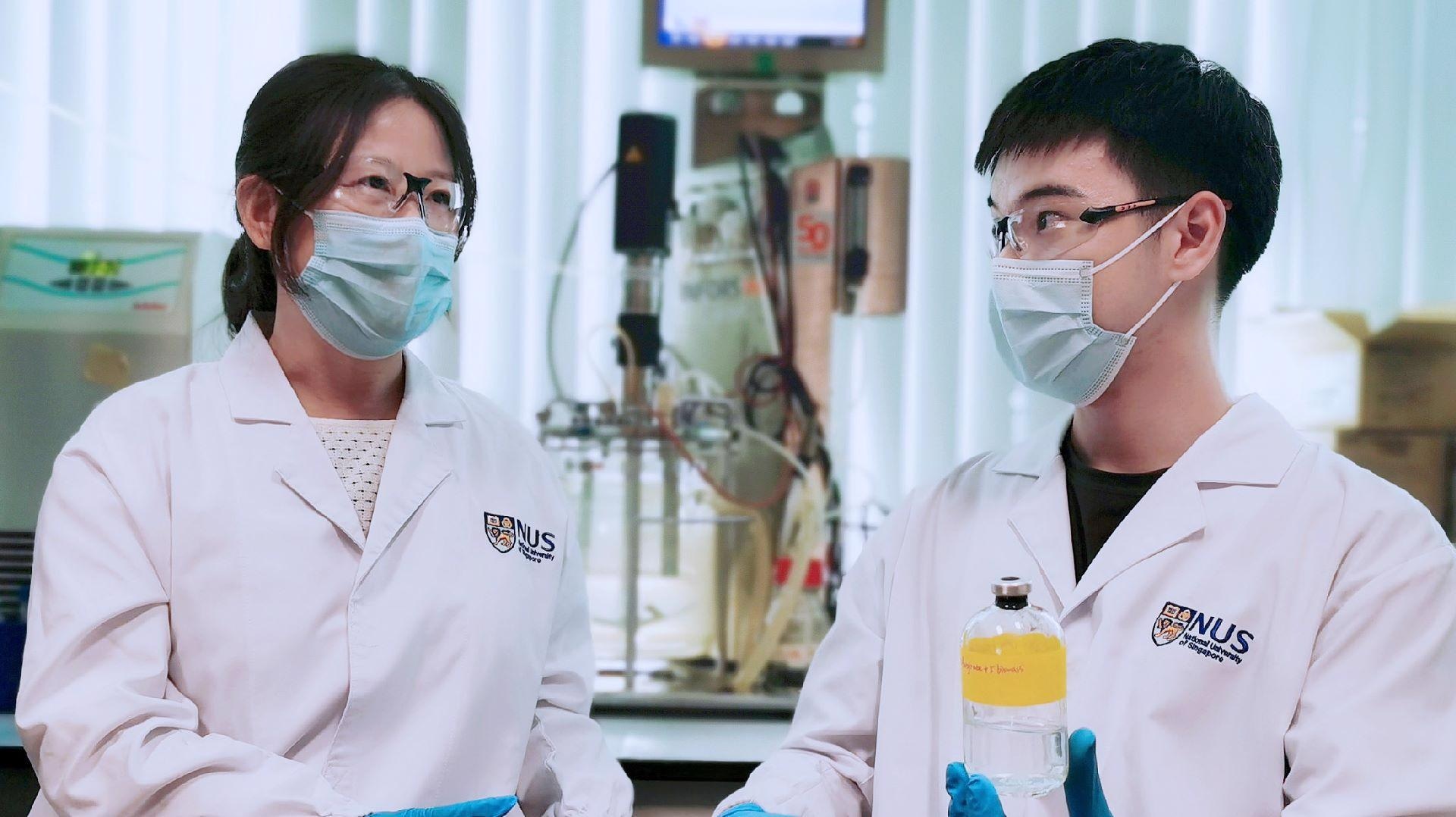Dec 9 2020
Scientists from the National University of Singapore (NUS) have created a new process to treat sewage water. This process is relatively cheaper, simpler and greener when compared to prevalent techniques.
 The team led by Associate Professor He Jianzhong (left) and Research Fellow Dr Wang Qingkun (right) discovered Thauera sp. strain SND5 after they isolated and tested various strains of bacteria from wastewater samples. Dr Wang holding a wastewater sample containing the unique SND5 bacterium. Image Credit: National University of Singapore.
The team led by Associate Professor He Jianzhong (left) and Research Fellow Dr Wang Qingkun (right) discovered Thauera sp. strain SND5 after they isolated and tested various strains of bacteria from wastewater samples. Dr Wang holding a wastewater sample containing the unique SND5 bacterium. Image Credit: National University of Singapore.
The NUS team, headed by He Jianzhong, an Associate Professor from NUS Civil and Environmental Engineering, has identified a new bacterial strain, known as Thauera sp. strain SND5 that can eliminate both phosphorus and nitrogen from sewage.
This latest finding, reported first in the Water Research journal on October 15th, 2020, considerably bring down the high operational costs and the emission of greenhouse gases linked to conventional wastewater treatment techniques.
The new treatment method has also been nominated for the International Water Association Project Innovation Awards 2021.
Two-in-One Pollutant Remover
In sewage water, phosphorous is present in phosphates and nitrogen is present in ammonia. Excess amounts of either of these compounds can pollute the environment and hence, they should be removed before releasing the treated water.
A majority of the prevalent sewage treatment systems make use of individual reactors to remove phosphorous and nitrogen, using different conditions for different microorganisms. But a process like this is not only bulky but also costly.
A few existing systems employ a single reactor, but these systems are still inefficient because different kinds of microorganisms in the same reactor will contend with each other for resources. This poses a challenge to preserve the fragile balance among the microorganisms, leading to overall lower efficiency.
Some prevailing sewage treatment techniques also present another problem—they emit a greenhouse gas called nitrous oxide. The new microbe created by the NUS team resolves this issue because it changes the ammonia into innocuous nitrogen gas instead. Moreover, phosphates that originally exist in sewage water were also removed.
Faster, Cheaper and Greener Approach
The research team discovered the special SND5 microbe in a wastewater treatment plant based in Singapore. When they were performing the usual monitoring work, they came across a surprising removal of nitrogen present in the aerobic tanks and also the removal of phosphate, which was better than expected, in spite of the lack of familiar phosphorus-removing microorganisms.
This leads us to hypothesise the occurrence of a previously undescribed biological phenomenon, which we hope to understand and harness for further applications.
He Jianzhong, Associate Professor, National University of Singapore
The team subsequently collected wastewater samples from a tank, separated numerous bacterial strains and tested all of them for their potential to remove both phosphorus and nitrogen.
One of the bacterial strains, which looked like creamy, sticky, light yellow blobs on the agar medium, surprised the team by its potential to eliminate both phosphorous and nitrogen from the water.
This microbe performed the task much faster when compared to other microorganisms that were tested by the team. The NUS researchers sequenced the genes of this strain and compared them with the associated microbes in a global database. Subsequently, they established it to be a new strain.
When compared to traditional nitrogen removal methods that involve nitrification and denitrification, the researchers’ way of using the recently identified microorganism can save around 62% of electricity because of its lower oxygen demand.
This holds a major significance because the aeration system in a wastewater treatment plant can consume almost 50% of the total energy of the plant.
Population and economic growth have inevitably led to the production of more wastewater, so it is important to develop new technologies that cost less to operate and produce less waste overall—all while meeting treatment targets.
He Jianzhong, Associate Professor, National University of Singapore
In the meantime, the NUS team is exploring ways to test their new process at a larger scale and create a “soup” of numerous microorganisms to further increase the performance of SND5.
Journal Reference:
Qingkun, W & Jianzhong, H (2020) Complete nitrogen removal via simultaneous nitrification and denitrification by a novel phosphate accumulating Thauera sp. strain SND5. Water Research. doi.org/10.1016/j.watres.2020.116300.